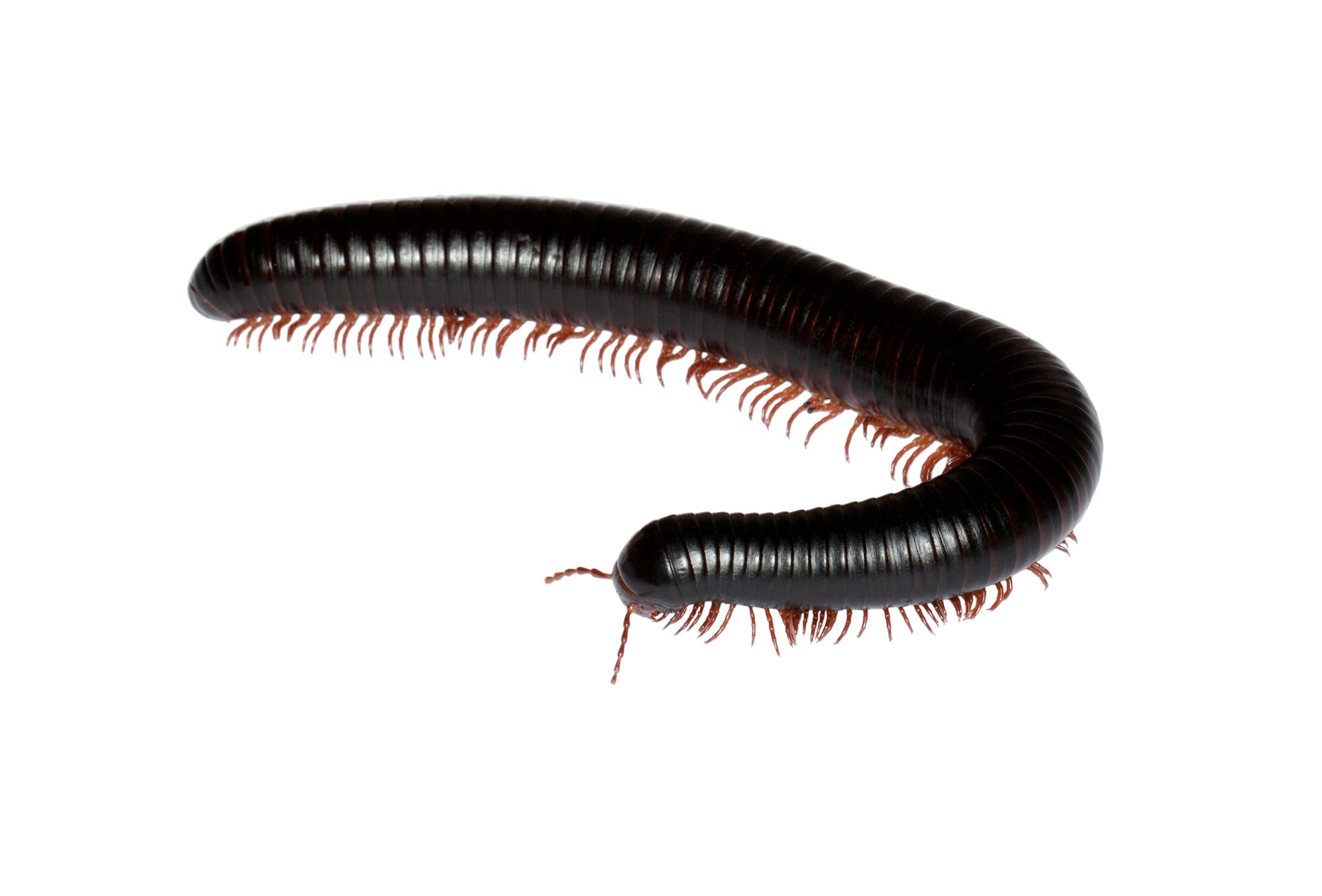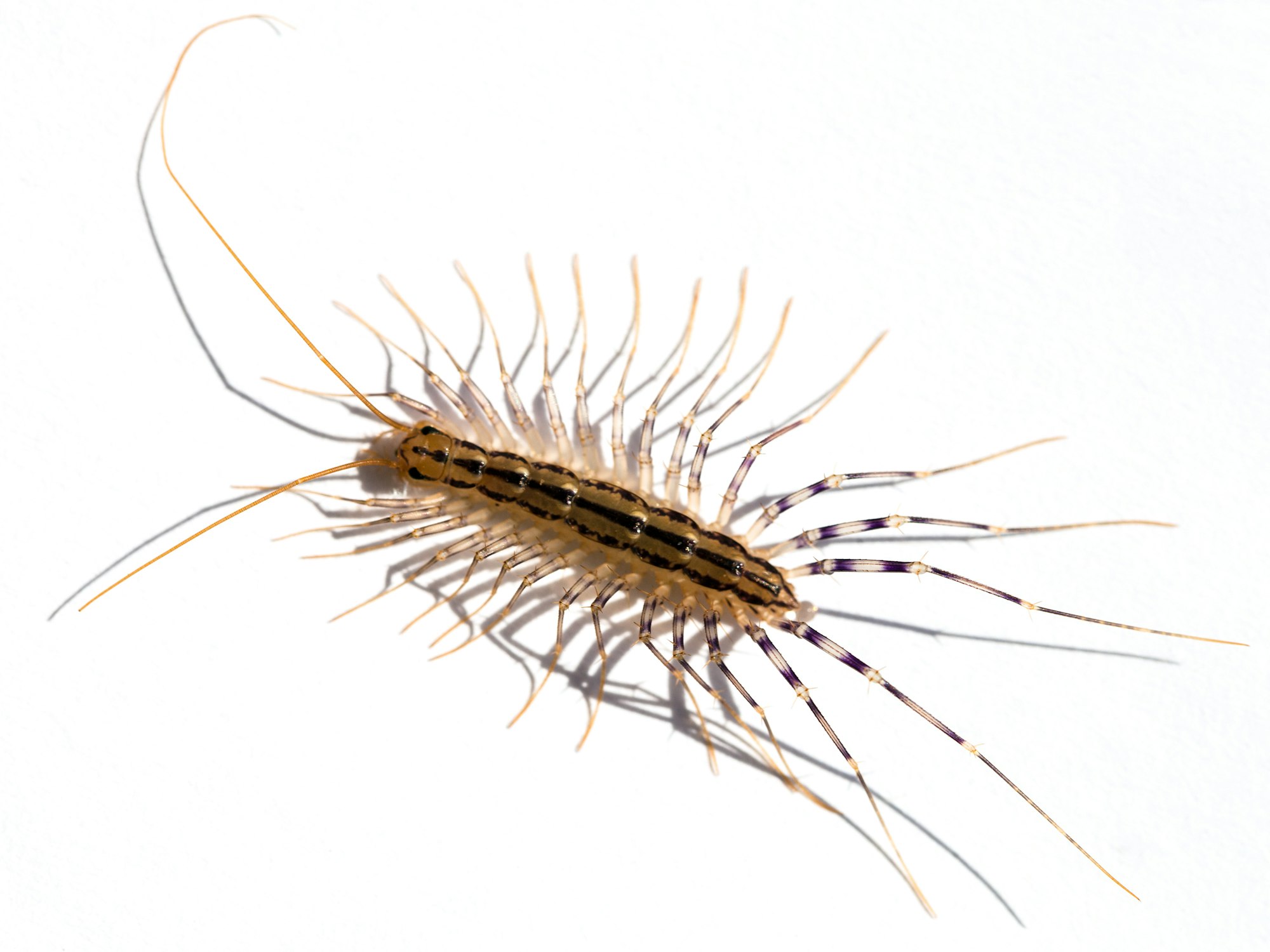Millipedes and Centipedes
Millipedes and Centipedes are not insects (which have six legs) but are both arthropods of the subphylum Myriapoda, which means 10,000 feet. Both millipedes and centipedes are considered beneficial insects and generally do not need management.
Millipedes

Millipedes were likely one of the first animals to colonize land during the Silurian period. They have two pairs of legs per body segment for a total of 40 – 400 legs depending on the species. They move slowly - curling into a defensive ball if disturbed. Millipedes do not bite and do not damage property. They are detritovores - eating vegetation, fungus, and even feces. Millipedes are a very common outdoor arthropod in the Bay Area, but not usually seen indoors. They may be brought inside in potting soil or come in through a crack, a failing weather strip, or an open doorway, especially if there is leaf litter or old wood near the side of the house. Millipedes usually die quickly once inside as the moisture level is too low to support them.
Centipedes

Centipedes have one pair of legs per body segment for a total of 30 – 354 legs depending on the species. They are predators of other insects and can move quickly to hunt. They have a flattened body that does not curl up defensively and will run away if disturbed. Some centipedes have a venomous bite but while the bite can be painful, it rarely causes any further problems. Centipedes do not damage property and are voracious hunters of insects that can damage garden plants. They are considered beneficial arthropods. The majority of centipedes live outdoors except for the house centipede (Scutigera coleoptrata).
House Centipedes
While alarming looking, these species are also highly beneficial and do a fantastic job hunting and taking down the insects that live in our homes. However, they have a habit of falling off walls and ceilings when least expected which can be very alarming. If you do not wish to share your home with a house centipede they may be either vacuumed up or removed and placed outside.
Management and Control
Millipedes and centipedes do not usually need management. If you notice large numbers entering your house, cut vegetation back at least a foot (12 inches) from the sides of the home and check to make sure all window screens and weather stripping under doorways are intact. Repair and maintain the siding of the house and fill any cracks that may form over time. You may also reduce the amount of water used in irrigation in order to create a less hospitable climate for these species.
Millipedes are a common outdoor arthropod in the Bay Area, but not usually seen indoors in high numbers. Possible means of introducing these creatures in the home include potting soil for indoor plants and cracks in the home or open doorways, especially near leaf litter or old wood. Millipedes do no harm to property and pose no risk to public health, and typically die quickly in a house because moisture levels are too low.
Millipedes and centipedes are not insects (which have six legs) but are both arthropods of the subphylum Myriapoda, which means 10,000 feet. Despite the names, millipedes have 40 – 400 legs and a centipede has between 30 and 354, depending on species. A millipede has two pairs of legs per body segment, moves slowly and eats vegetation. The body is cylindrical and it curls up when disturbed. A centipede has one pair of legs per body segment, moves quickly and is predaceous on small insects and other arthropods. It has a flattened body and never curls up. Some centipedes have a venomous bite. They also do not do any damage in a house, and can provide beneficial pest control.
Rarely do millipedes or centipedes need management. If large numbers are entering a house, vegetation near the edges can be cleared and screens and gaps under doorways checked and repaired. Reducing moisture will also limit their numbers. Most of the time, we can enjoy millipedes and centipedes outdoors as part of the diversity of fauna in our yards and gardens.
Page last reviewed: September 8, 2023
